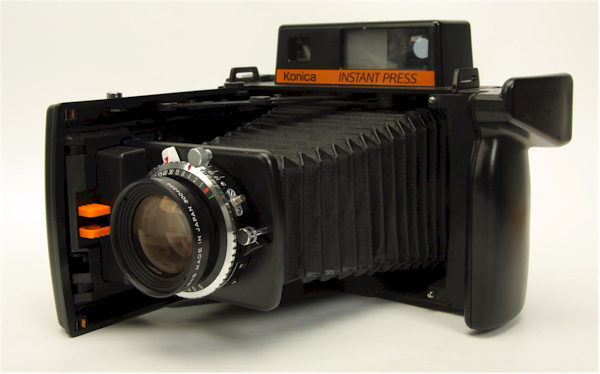What's in the box?

Although hardcase Polaroids allow some selection of shutter speed (by tweaking the Light / Dark control), their electric eye is often fooled by pointing straight into the setting sun. As this is something I often found myself doing, it was apparent my old hardcase (a heavily modified Color Pack III), was to be upgraded by a full manual pack-film camera.

A Polaroid 180, 185*, 190, 195 and 195 SE were all considered as a replacement for my friend's FujiFilm FP-1 I had been using (for more on the FP-1,
CLICK HERE). The 180 was eliminated because though similarly lensed, they are slightly slower than the 190 & 195 at
f4,5. The 180 does run to
f90 though, an unfeasibly small aperture to exploit the high speed of Polaroid's ISO3000 films (Type-87 and Type-667), and now one of the few remaining pack-film types still produced FujiFilm's FP-3000B.
 195 SE and 190.
195 SE and 190.The 195 (in this case an SE) was chosen over the 190 as it comes with a clockwork timer instead of the electronic timer of the 190 (those batteries though obtainable, are a bit hard to get sometimes). As 195 also do not have electronic timers and the associated thicker back-plate, they also accept FujiFilm pack-films without internal compression of the tabs making them hard, and sometimes impossible to use too.
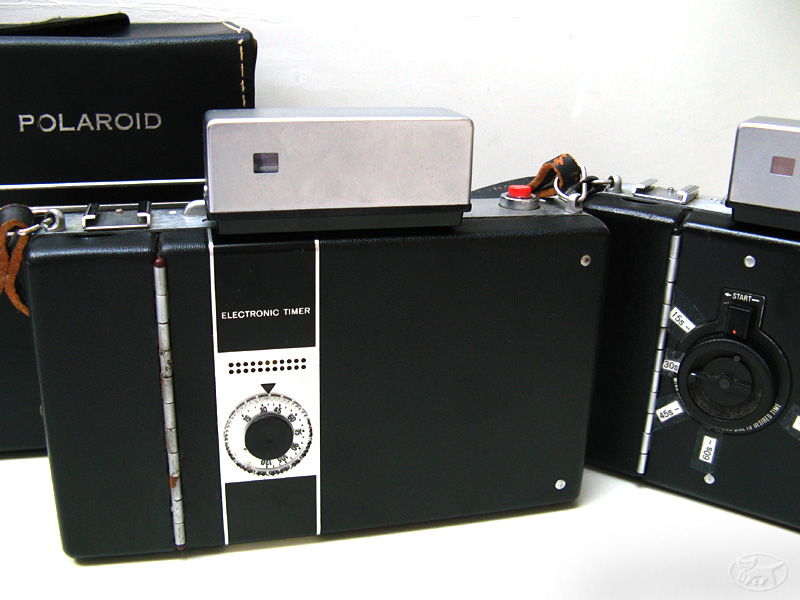 190 (L), and 195 SE (R) Timer Backs.
190 (L), and 195 SE (R) Timer Backs. Battery compartment on 195 is blank, whereas on 190 it accepts 1x PX-something battery.

190 Electronical Timer Detail. They beep (quietly), and the light goes off when tripped by a micro-switch on pulling the print tab.
For assumed cost saving reasons, Polaroid only fitted the Zeiss viewfinder / rangefinder combination to the 180 and 190. The 195 and 195 SE both came with the cheaper dual-window finder.
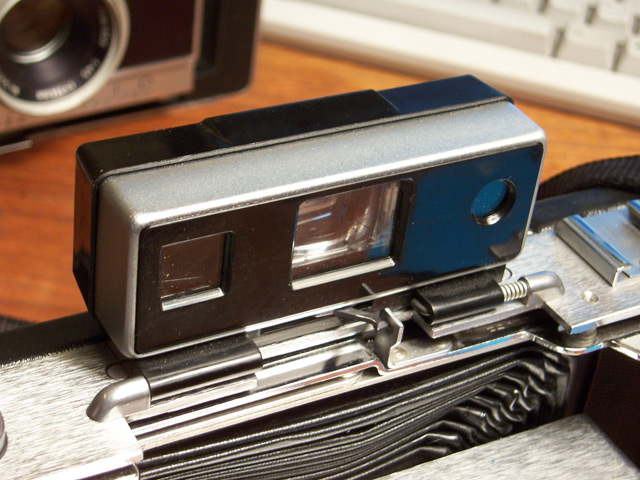
Stock 195 finder. Uglier perhaps, but the parallax correction on the two window device only has to run up-down, not up-down AND left-right, so it might be more accurate for framing as well. Especially with the viewfinder element in line with the lens center. Some report this to be true.
I replaced my 195 SE dual-window native rangefinder / viewfinder combination with a single (small) window Zeiss version from a 350-series camera. Later model 180 also have a Zeiss finder, but the larger windowed version. If this is not confusing already, the 190 comes with a Zeiss too, but the same small window as fitted to 350-series camera. The Zeiss finder though does give a nice bright focus spot, and is comparable to any other rangefinder functions.
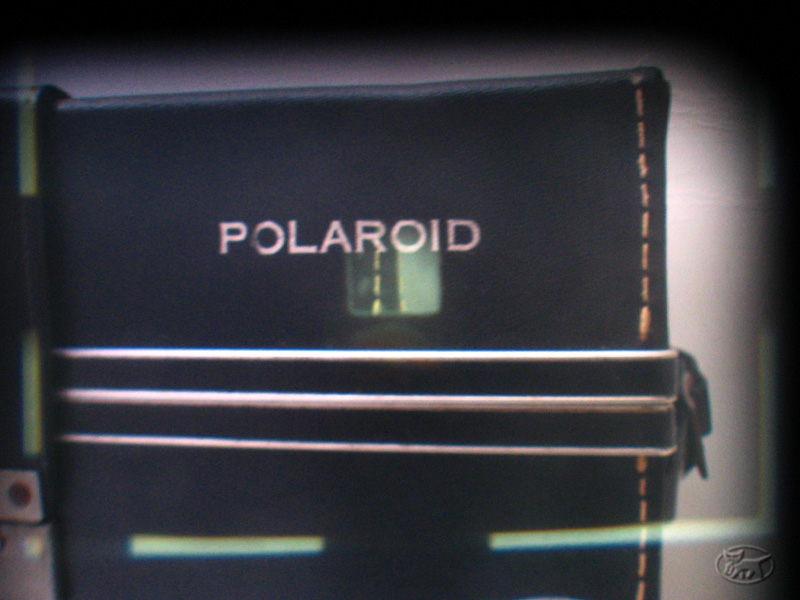
Nice bright frame lines and focus spot.
Focusing and composing through one window is a lot easier, especially if you have the habit of snapping stuff quickly. This is a popular tweak, driven by both name and function. No screwing or anything hard needed here, just a little flick on the spring-bar with a small screwdriver. As long as you do not let the tension spring launch itself into orbit, putting the new one on is just as simple - literally a 30-second job.
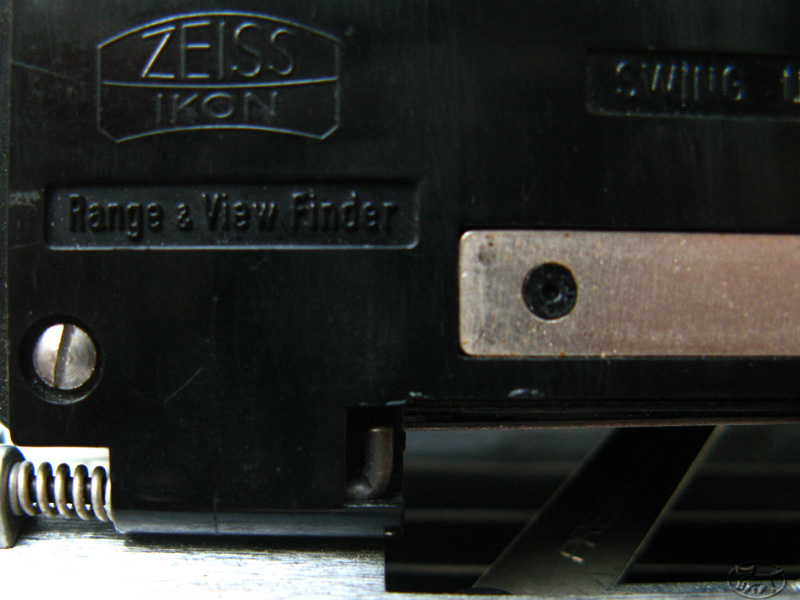
Spring-bar for rangefinder / viewfinder removal process.
Some spring-bars though are quite tight and a little whack with a hammer, or some needle-nosed pliers are needed to dislodge.
The Zeiss VF / RF combo is nice and bright with a central yellow dot for focusing, and parallax correction frame-lines. It focuses down to just under 1m, almost as good as the FP-1 at 80cm. As well as being X & M synched, it also has a self-timer, a facility some times for tripod mounted night work. In the same segment, the FP-1 and Konica Instant Press do not have a self-timer.
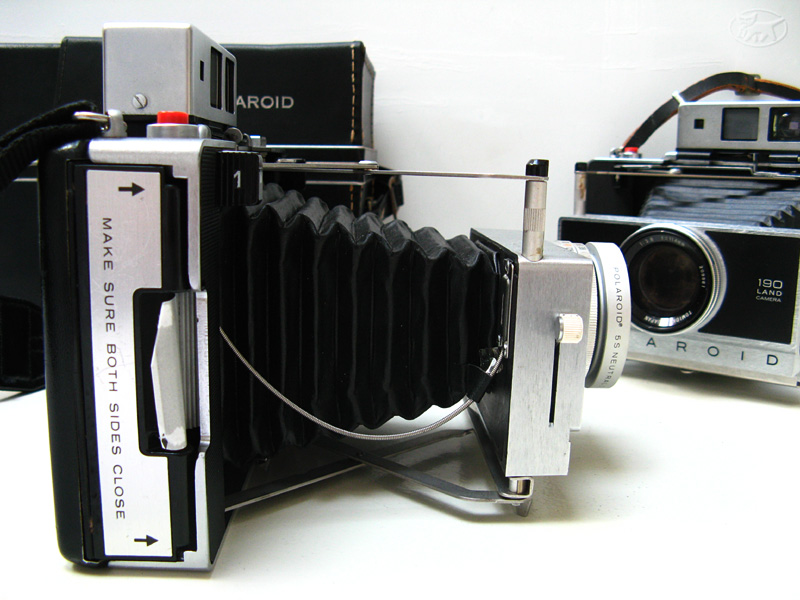
Manual shutter cock lever in white. You cannot see the cocked lever through the VF like you can on the FP-1 though. The 180, 185, 190 & 195 do not have a fold-out bed like the earlier Pathfinder, or FP-1 & Instant Press, instead using a free standing frame to support the bellows. The unique lever driving focusing is smooth and once mastered, very easy to use. Some of these cameras are also spring-loaded, so when releasing the bellows, they automatically extend. My 195 SE does not do this, but others I have worked on have.
While the hardcases will switch to 1/2000s, I've not need that fast with manual aperture control as a supplement (maximum speed of 1/500s). The manual aperture control also allows greater control over compositions, including for ISO3000 films which during the day had previously had been confined to shooting at
f64 with a hardcase. Sometimes infinite DoF was just a pain.
For those so inclined, later 195 (notably the 195 SE, and maybe some 190, and all 180 too I think) lenses are also equipped with an EV-scale, in support of the corresponding EV-graduated matching light meter, giving interlocked aperture or shutter priority effectively right there on the lens. Shooting with a modern Sekonic and a Gossen Digisix both in EV-mode is a real whizz as a result. The interlocked EV function was a snappy addition to manual lenses, and perhaps declined with the advent of largely automatic camera.
An EV-calibrated lens is the only difference I can resolve between the 195 and the 195 SE. Though, there may have also been package content differences too.

Nice bright 190 / 195 lens -
f3,8 to
f64, and 1s to 1/500s. 180 has max of only
f4,5 - but runs to
f90!
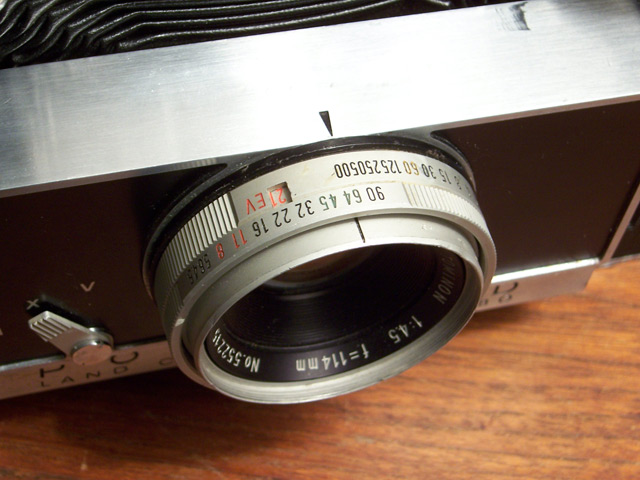
Sean's massively small
f90 capable 180.
The EV interlock on the 180 and 195 SE are a lot easier and a lot more reliable to use than the previous manual incarnations on the 110 and 120 Pathfinder series.
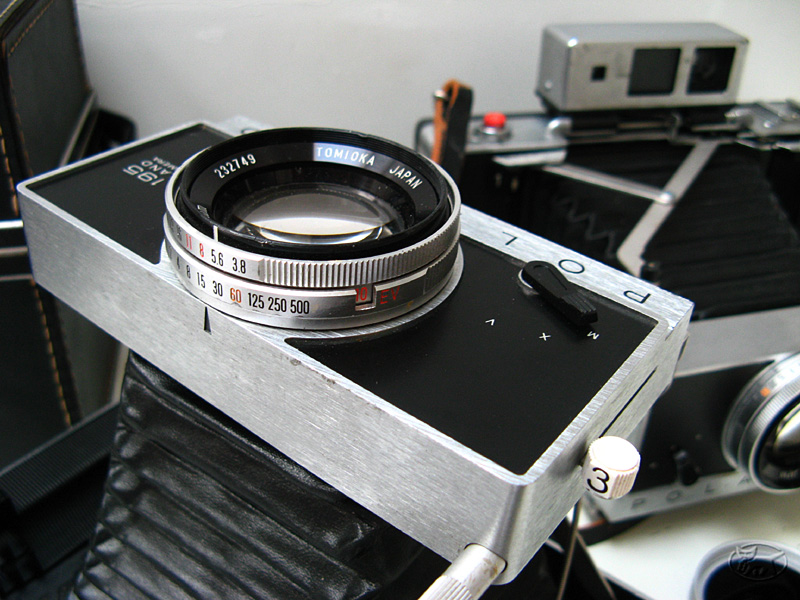
EV Interlock on 195 SE. Note: leaving the flash sync lever on 'M', though of course not appropriate for modern X-synched flashes ('X' position obviously), is a kludge to stop the lever from getting knocked into the 'V' (self-timer) position. Out-and-about, shooting in the street, and dragging my 195 through
haikyo all over, means it sometimes gets knocked. If knocked from 'M' it only goes to 'X', thus not getting the annoying and possible shot-loosing self-timer function engaged. Tape would also be an option, but that would soil her otherwise pretty face.
Results? Wow! After using the plastic lensed hardcases for years, I was amazed at the sharp contrasty results from the 4-element (114mm) Tominon on the 195. With RF focusing, and an accurate exposure setting, this bus will freak out anyone used to normal Polaroid attributes. Used with Fuji film, it will give you amazingly sharp, full-ranged grays and gloriously defined colors. Luckily I use it less than diligently, often estimating my exposures manually, and sometimes with well-expired films, this has resulted in some tremendous effects and some very pleasing (at least to me) results.
Low light use with ISO3000 films makes for a great, no-flash, low light photography.
 Modern Nihon 12.
Modern Nihon 12. Expired Type-667, 1/60 and
f16.
Because of the rangefinder and leaf-shutter configuration, the 190 & 195 are nearly silent, with smooth steady operation. Hand-held exposures down to 1 second are easy as a result of little moving parts, and well balanced construction.
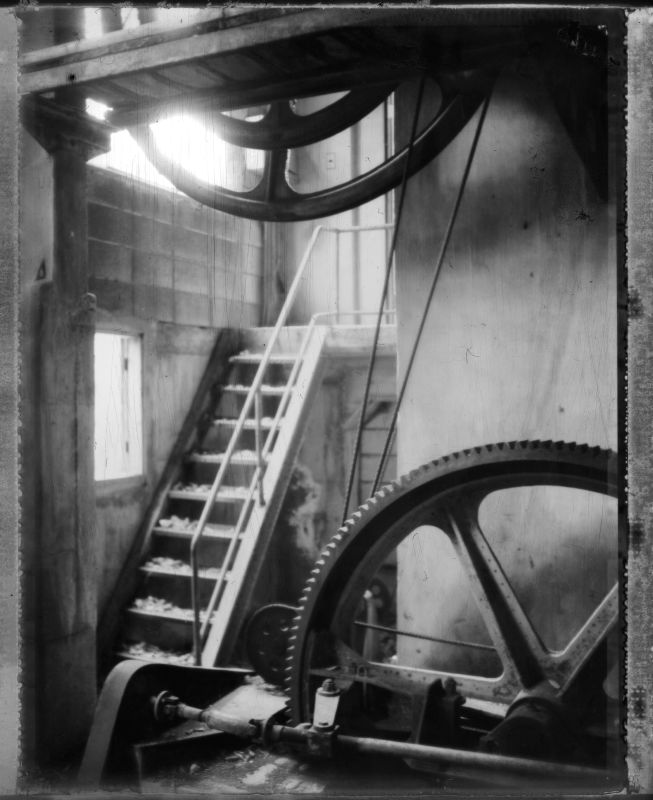 An Old Ropeway Engine Room Stands Untouched for Over Thirty Years.
An Old Ropeway Engine Room Stands Untouched for Over Thirty Years. Expired Type-665, 1s and
f3,8.
Tight depth-of-field from the 195 SE lens wide open at
f3,8 is very pleasing.
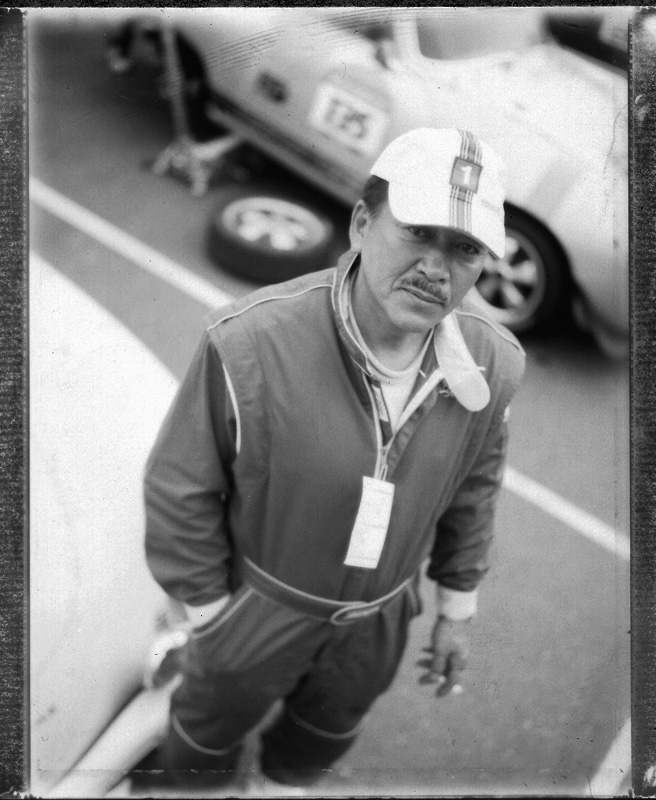 A Rafish Porsche Driver Takes a Break Between Heats.
A Rafish Porsche Driver Takes a Break Between Heats. Expired Type-665,
f3,8.
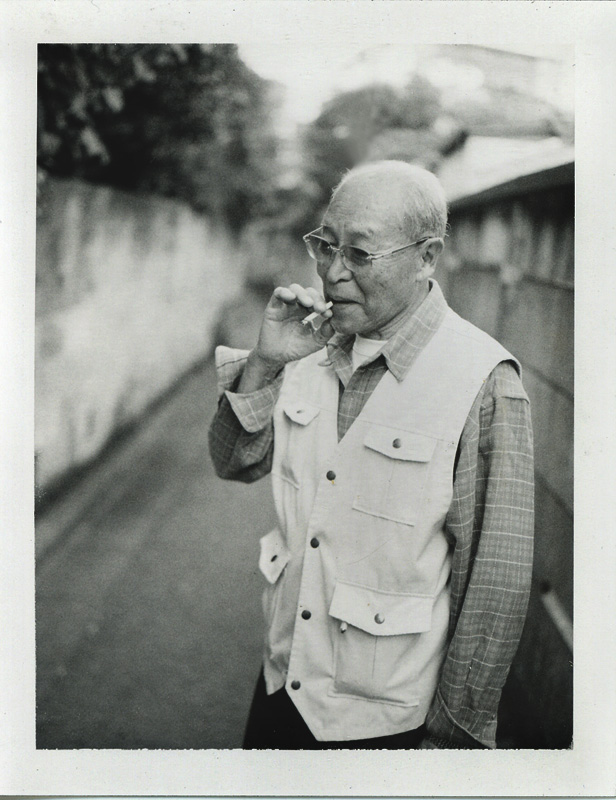 A Man Who Told Me He Used to Be a Manga Artist.
A Man Who Told Me He Used to Be a Manga Artist. Expired Type-667,
f3,8.
Additionally, I was pleasantly surprised to discover an added bonus of the 195; they also take
square format films, as well as the rectangular format films. A great little party trick, and one I think all this series of folding Polaroids is capable of. The viewfinder does not auto-adapt for square format though - if you can find any these days that is - like the EE66 / 88 / 100 and Pro Pack / Reporter series do - but it is not hard to visualize the changed aspect ratio in the viewfinder, as it is easy to line up a square composition in the rectangular frame lines. With the square format films fitting into the right-side of the camera back (lens front), the viewfinder needs to be composed with an imagined square on its left-side.
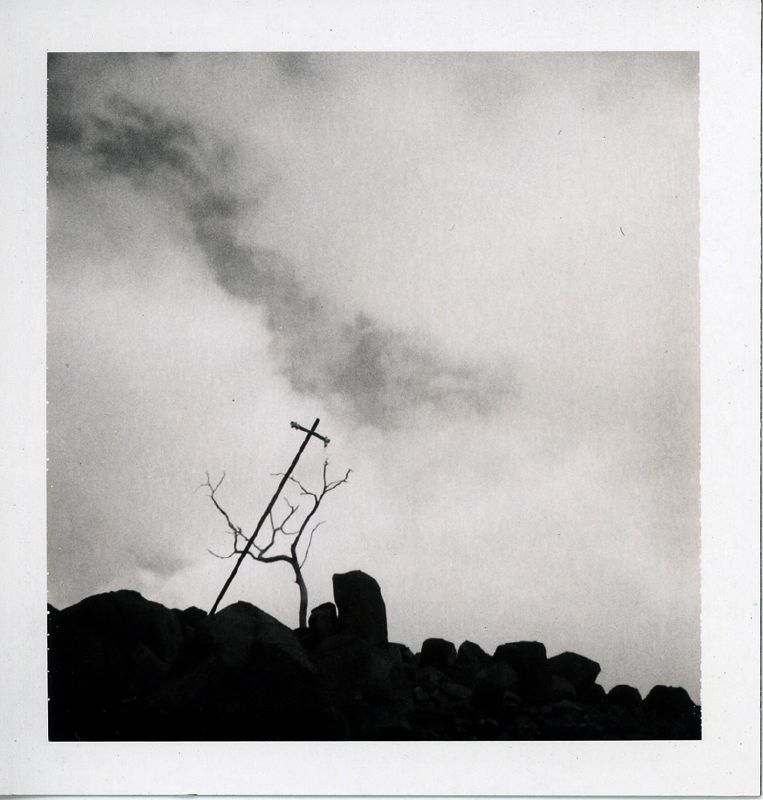 Chillogoe Smelter.
Chillogoe Smelter. Type-87.
Color? Sure.
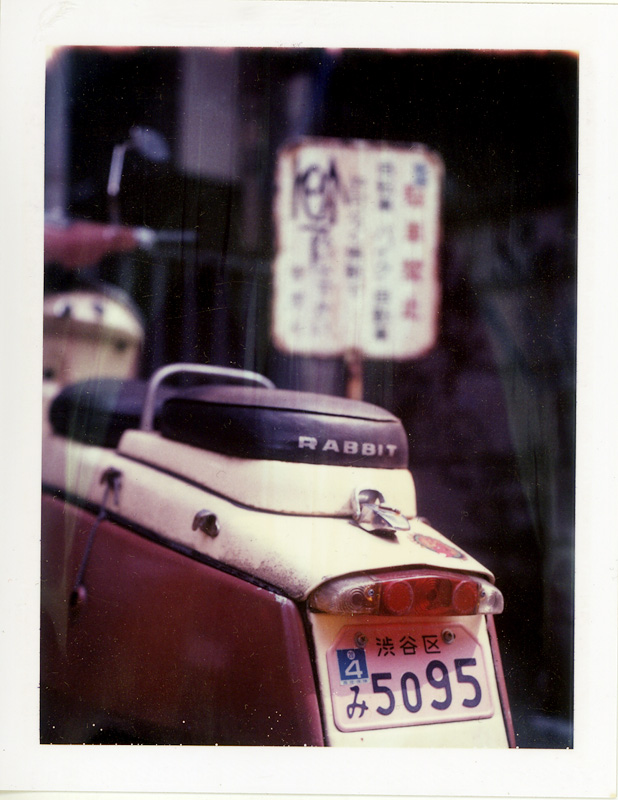 Shibuya Fuji Rabbit.
Shibuya Fuji Rabbit. Expired ID-UV, 1/125s and
f4,5.
Numerous accessories such as ND and O filters (44,5mm), portrait & telephoto adapters, and various carry-cases were also available. Realistically, the only accessory needed for a real shooter might be an orange filter for contrasty skies. Or, maybe an ND if you're into ISO3000 stuff.
 Native 190/195 ND5 Filter.
Native 190/195 ND5 Filter.Overall, the 195 is an extremely competent Polaroid, as you would hope from what was the top-of-the-range unit when made in 1975. The nicely machined aluminum, and collapsible operation make it a great tactile camera to use. Collapsed, with its plastic cover in place (with snappy cold-clip holder), it is a rugged, easily carried machine. In mint condition, with accessories in their leather cases, they can exceed USD750. Happily this slightly used one was less than that, and a lot less than the comparable FP-1.
f3,8 always a valuable attribute for a Polaroid camera, with low light and street work permanently set for wide-open aperture priority.
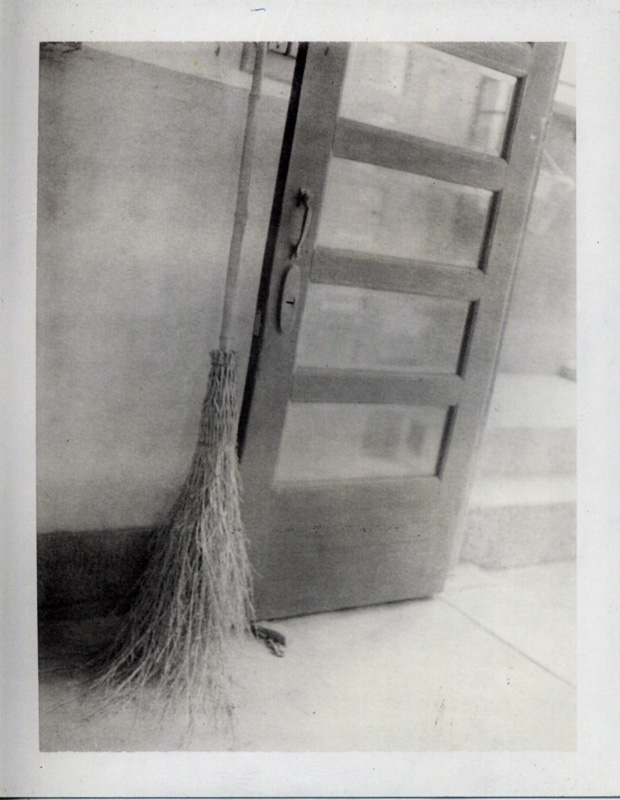 Modern Nihon 21.
Modern Nihon 21. Expired Type-667,
f3,8.
 A Proud Young Lad on the Way to School by Himself.
A Proud Young Lad on the Way to School by Himself. Expired Type-665,
f3,8.
Arigato. Skorj.

*Footnote: in looking for a camera of this type, I came across a Polaroid 185, noticed the electric eye on the front and assumed it was an auto device. Not true it seems. The 185 is a super-rare full manual, but with a built-in light meter. Only a few were supposedly built, as gifts for those close to Edward Land according to Internet legend. What one was doing in Japan, I can only guess, but I let it slip through my fingers for a few thousand yen. The Mamiya lens is only
f5,6 though, so maybe I would never have been happy after all...
A few years later, I spied this mint 185 in my local camera store. Clockwork timer equipped, it is essentially a 180 with a battery powered match needle exposure system hand milled into the top of the lens board. Interesting to play with, but at
f5,6 and such a price, it makes a good collector piece, and perhaps not a camera for rough treatment in the field. Hardly suitable for me, but a friend bought it and I get to visit it sometimes...

Of a similar type are the FujiFilm FP-1 and Konica Instant Press.
